Edible plants growing indoors are on the rise, and coffee plants are certainly no exception. These plants have an absolutely amazing shape and their glossy green leaves make them the perfect choice for houseplants. Typically, coffee plants grown indoors primarily focus on leaf growth.
It is possible to encourage your tree to flower and bear berries indoors, but it is a long and challenging process. Thus, the occurrence of flowers and fruits, if any, is considered an additional benefit.
However, planting coffee indoors is a delightful and rewarding endeavor that allows you to savor the lush foliage and jasmine-scented flowers. And now, read on to discover this awesome plant with glossy leaves and learn how to care for it in your own space properly.
How to choose the right coffee plants
- Arabica Coffee (Coffea arabica): This is the most popular coffee species for indoor cultivation. It produces high-quality coffee beans and is well-suited to indoor conditions.
- Robusta Coffee (Coffea canephora): Robusta coffee plants are hardier and more tolerant of varying conditions, making them a decent option for indoor growth.
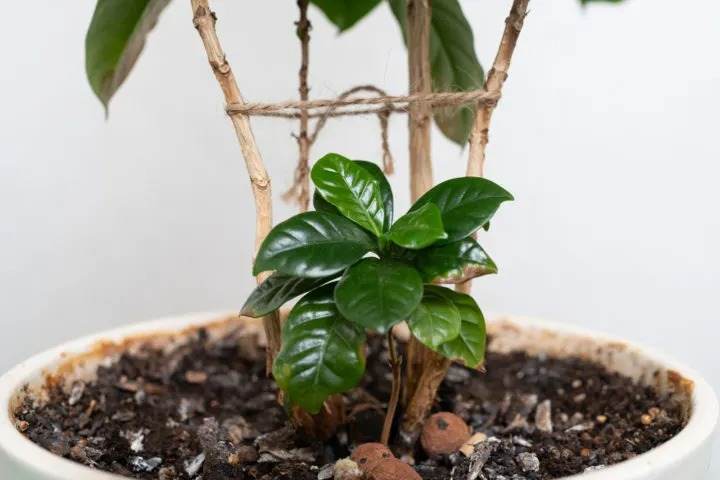
How to plant a coffee plant indoors
- Selecting a Plant: Many gardeners choose to purchase a healthy coffee plant from a reputable nursery or source. Remember to look for a young plant with vibrant leaves.
- Container: Choose a container with good drainage. Coffee plants can be kept relatively small, so a pot around 10-12 inches in diameter is usually sufficient for indoor growth.
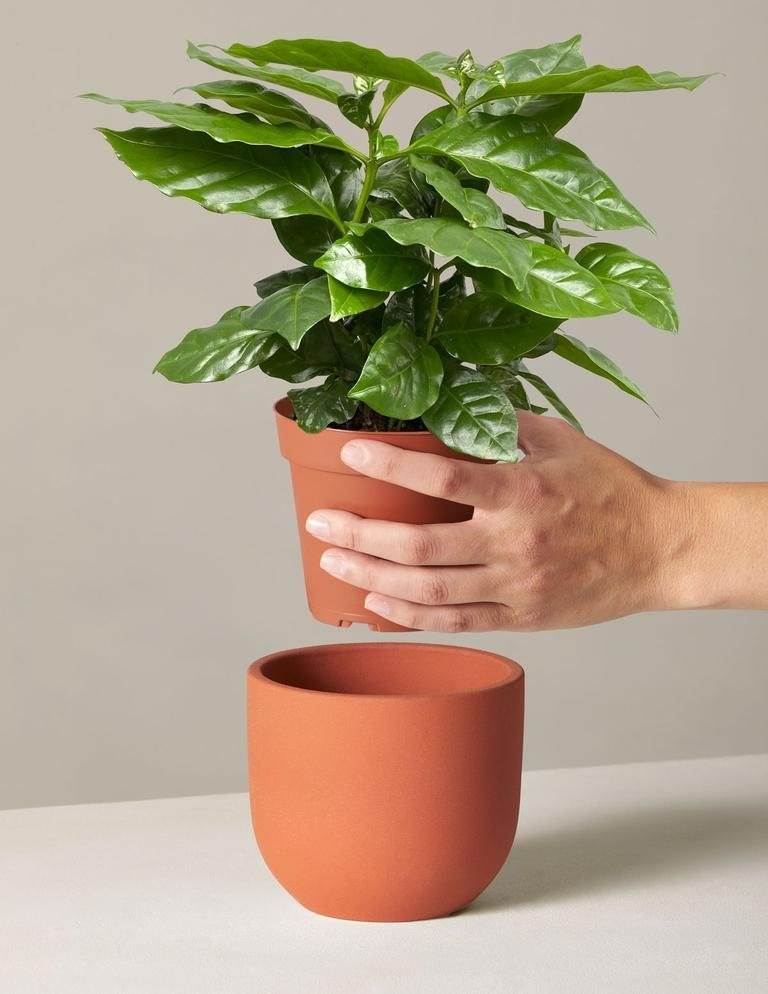
- Soil: Use well-draining soil with a mix of peat, perlite, and compost. Slightly acidic soil with a pH of 6.0 to 6.5 is ideal.
- Location: Place your coffee plant in a spot with bright, indirect sunlight. Avoid direct sunlight, as it can burn the leaves.
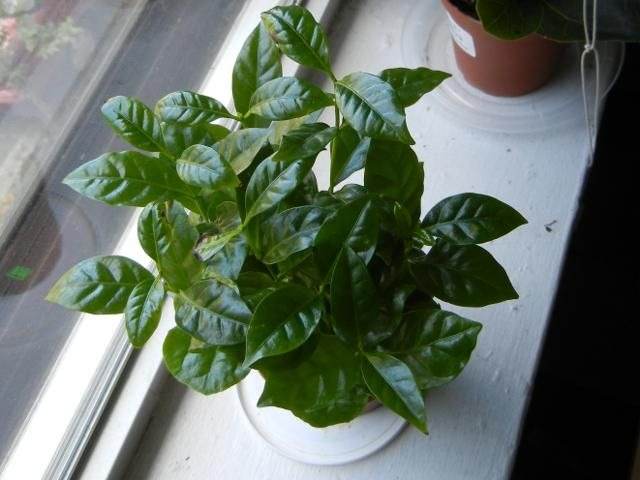
How to care for an indoor coffee plant
- Temperature: Coffee plants thrive in moderate temperatures. Keep your plant in an area with temperatures between 60°F to 70°F (15°C to 24°C).
- Watering: Keep the soil consistently moist but not waterlogged. The plant should only be watered when the soil is dry to the touch. Be cautious not to overwater, as coffee plants are susceptible to root rot.
- Humidity: Coffee plants prefer higher humidity levels. You can increase humidity by misting the leaves regularly or placing a tray of water near the plant.
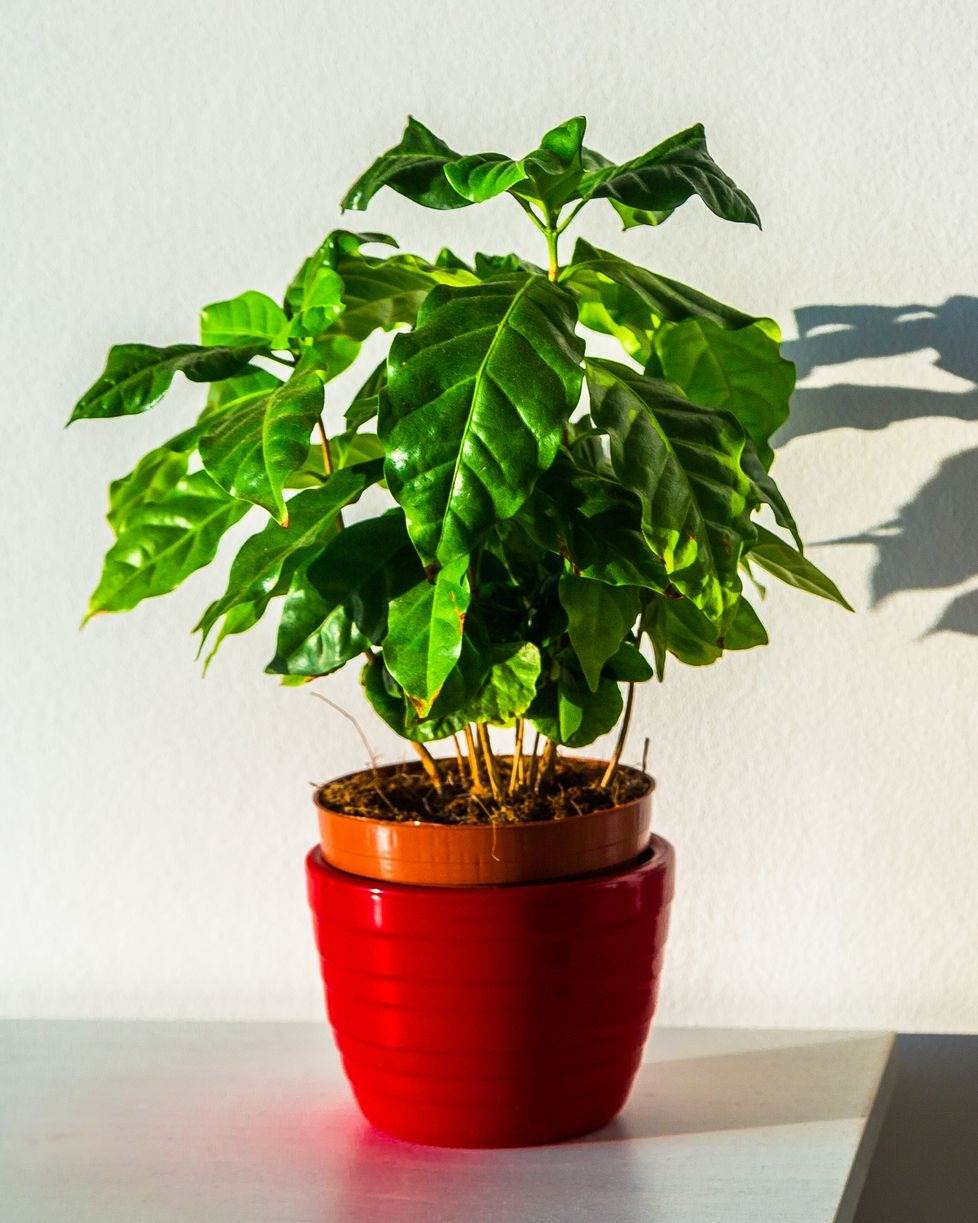
- Fertilization: Fertilize your coffee plant with a balanced liquid fertilizer once a month during the growing season (spring and summer). Reduce or stop fertilizing during the dormant period (fall and winter).
- Pruning: Pruning your coffee plant can encourage bushier growth. Besides, remove any dead or yellowing leaves.
- Pollination and Flowering: Coffee plants produce fragrant white flowers that eventually develop into coffee cherries. Indoors, pollination can be a challenge, so hand pollination might be necessary to encourage fruiting.
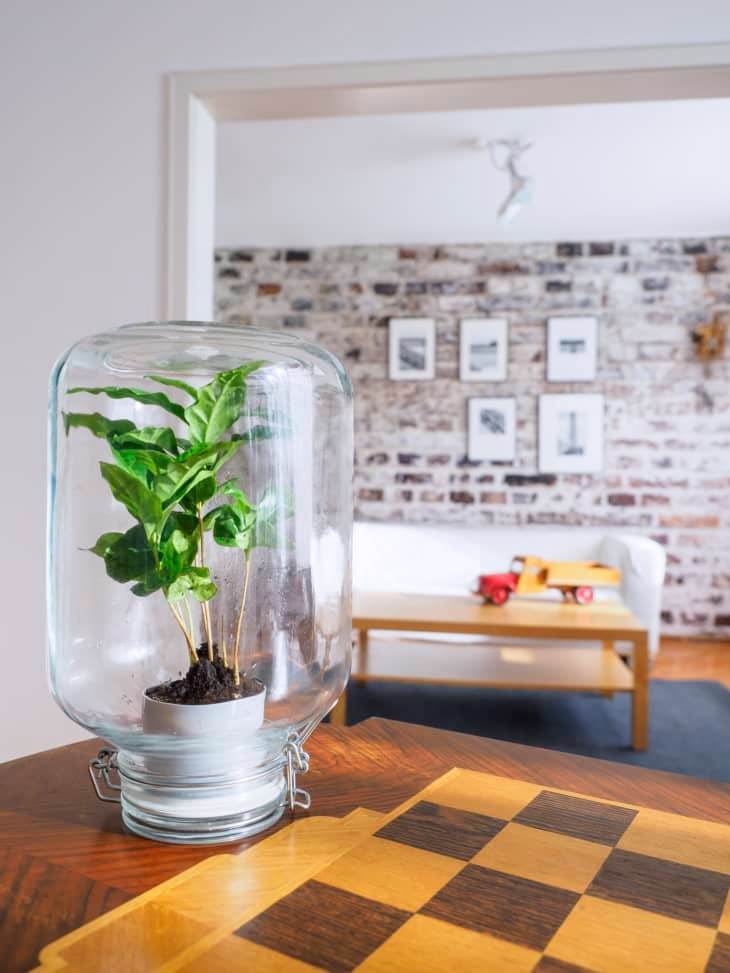
How to treat common pests and plant diseases
- Spider Mites: These tiny pests can cause yellowing, stippling, and webbing on leaves. To protect the tree from spider mites, regularly mist your plant and keep humidity levels up.
- Aphids: Aphids feed on plant sap, causing distorted growth and honeydew secretion. They can be controlled by physically removing them or using insecticidal soap.
- Mealybugs: Mealybugs are small, white, cottony insects that cluster in protected areas on the plant. They can be prevented through manual removal or using neem oil.
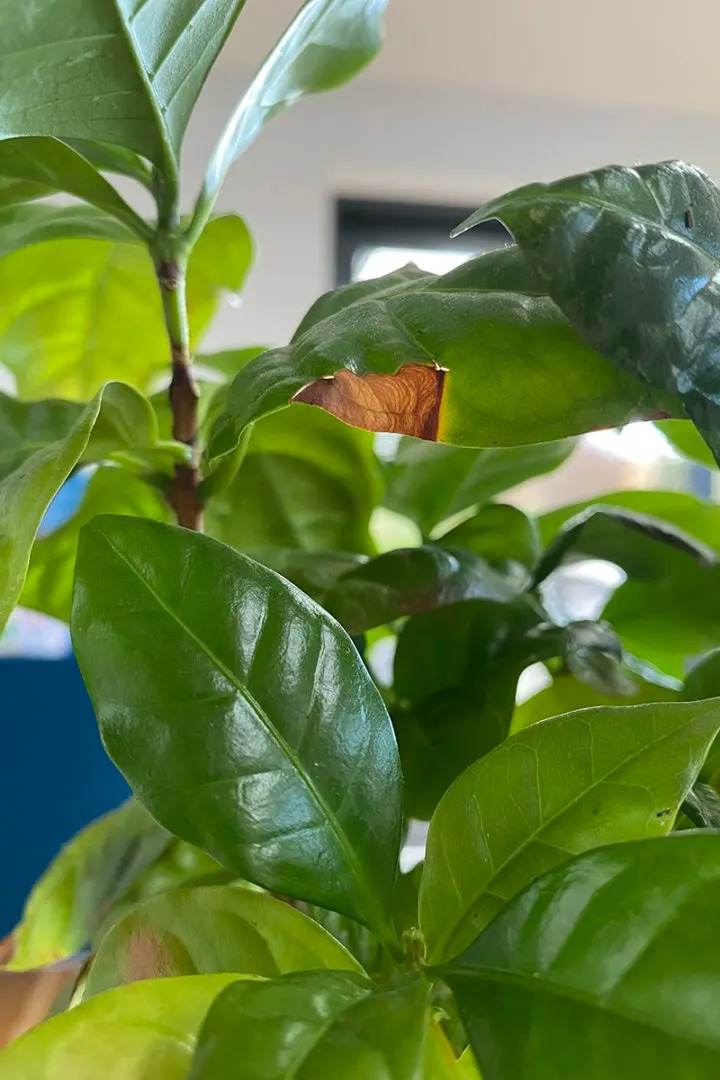
- Root Rot: Overwatering or poor drainage can lead to root rot, a fungal disease that affects the roots of the plant. To prevent root rot, ensure proper drainage and avoid overwatering.
- Leaf Spot: Leaf spot diseases are caused by fungi and result in dark or discolored spots on the leaves. Keep the foliage dry by watering at the base of the plant and removing affected leaves.
- Powdery Mildew: This fungal disease appears as a white powdery substance on leaves. Increasing air circulation and reducing humidity can help prevent powdery mildew.
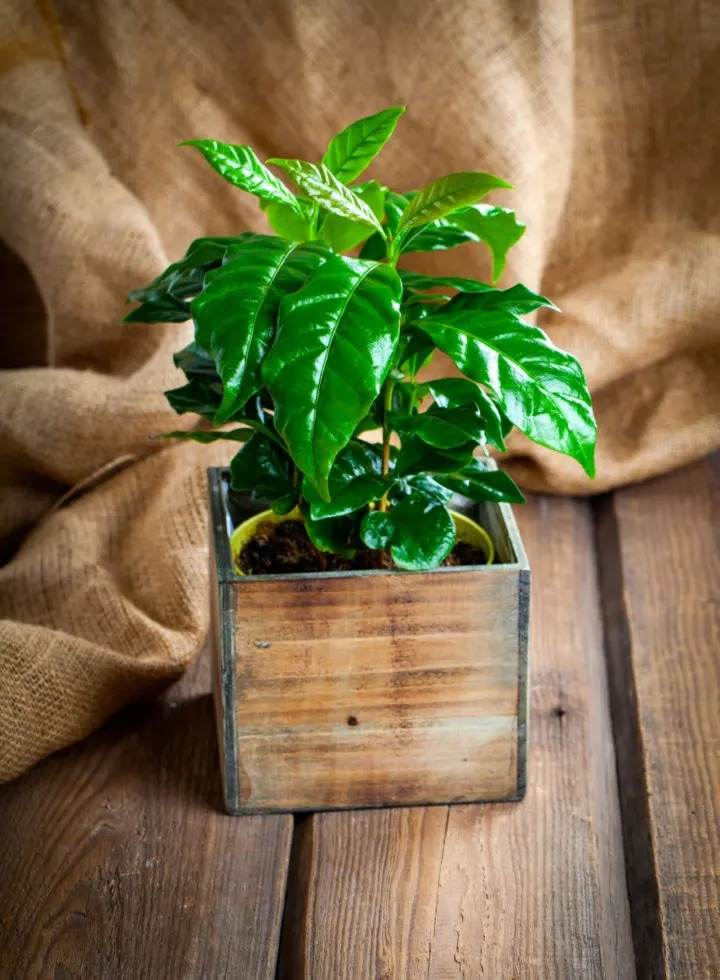
Growing coffee indoors can be a fun and educational experience, but it’s important to note that indoor coffee plants might not produce beans suitable for brewing. However, the process of caring for and nurturing your own coffee plant can be incredibly enjoyable. No matter where you choose to showcase it, the vibrant and glossy foliage will effortlessly bring a tropical vibe to any space. Start planting today, and share with us how your beloved tree grows and thrives.
